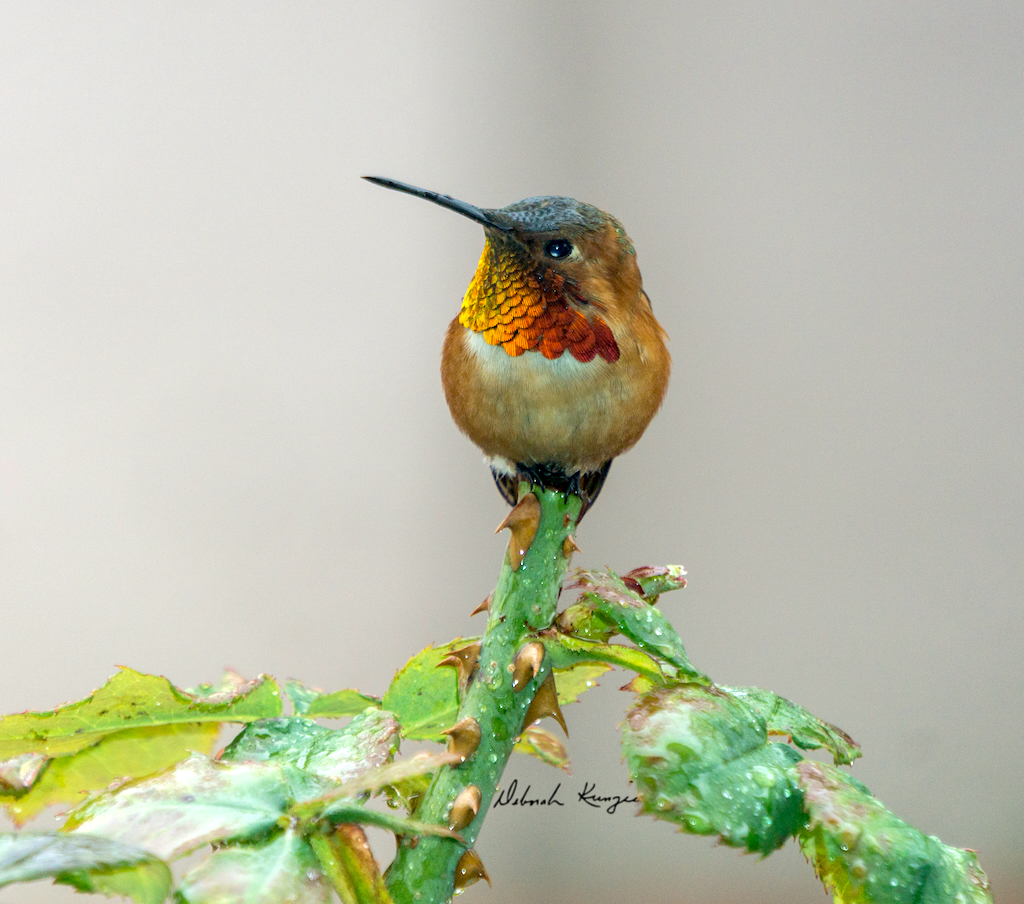
The hummingbird perches on the thorned stem, a momentary stillness that belies its nature. Its burnished copper throat catches light like a living ember against the soft tan of its breast feathers. This is a rare gift—to witness the hovering one at rest.
Time moves differently when you sit with birds. The minutes stretch and contract according to their rhythm rather than the artificial constraints of human schedules. I have learned this through countless hours waiting, camera in hand, breathing slowly so as not to disturb the air between us. The waiting itself becomes a practice, a meditation that the contemporary world rarely allows.
When we photograph birds, we enter into a relationship. It is never just taking. The hummingbird doesn’t owe us its presence or its beauty. Rather, we are being invited into a moment of intersection between our world and theirs. The bird offers itself to our gaze not out of obligation but as a gift freely given, one we receive with gratitude rather than entitlement.
To photograph a hummingbird is to encounter paradox. Here is a creature weighing less than a penny, with a heart that beats over a thousand times per minute, teaching us about stillness. Here is a being that must consume more than its body weight in nectar daily to survive, teaching us about abundance. Here is an animal that many people will never truly see in their lifetime, teaching us about attention.
The indigenous peoples who share territory with hummingbirds have long recognized them as messengers, as carriers of medicine, as embodiments of joy and persistence. The Hopi saw them as rain bringers. The Navajo considered them restoration medicine. So many human cultures understood what science later confirmed—that these tiny beings are essential pollinators, carrying life from flower to flower as they feed.
Photography asks us to be present in a way that echoes indigenous ways of knowing. Both require us to notice, to attend, to bear witness. Both ask us to recognize relationship. The camera becomes not just a tool for capturing but for connecting. Through its lens, we actively participate in an exchange with the more-than-human world.
I’ve come to understand that what calms me in these moments of waiting for the hummingbird isn’t withdrawal from the world but deeper immersion in it. My breathing slows to match the rhythm of leaves in the breeze. My awareness expands beyond the narrow focus of daily concerns. I become available to wonder.
The hummingbird doesn’t care about my deadlines or my anxieties. It lives in bird time, which is to say, it lives in the eternal present. When it pauses on a thorny branch, iridescent gorget glowing like captured fire, it offers a moment of communion. Here we are, together, two beings sharing brief intersection in the long arc of evolution.
What does it mean to receive such a gift? It means acknowledging that we are not separate from but embedded within the living world. It means recognizing that beauty is not frivolous but essential. It means accepting that patience is not a burden but a pathway. It means understanding that gratitude is not merely a feeling but a practice.
When I look through my photographs later, I am reminded that each image represents not just a successful capture but a successful surrender—a moment when I set aside human exceptionalism and allowed myself to be just another creature under the sky, watching and being watched in return.
The hummingbird teaches us that attention is a form of reverence. In the practiced patience of wildlife photography, we find not just images but instruction—lessons in reciprocity that we desperately need in a world that values extraction over exchange, consumption over connection.
Each photograph becomes a thank you note, a record of gratitude for the privilege of witnessing. The hummingbird gives its image; we give our attention. In this exchange, we glimpse the possibility of a different way of being in the world—one built on the recognition that we receive as much as we give, perhaps more.